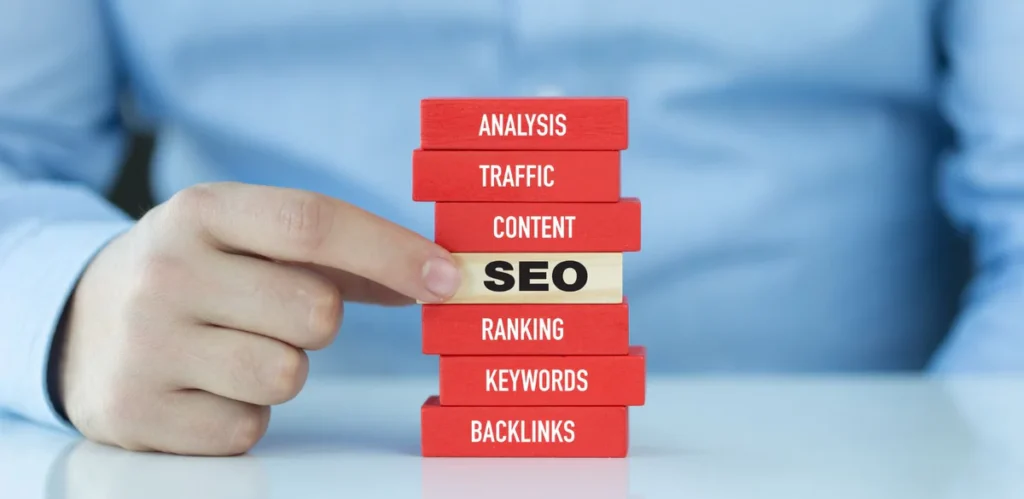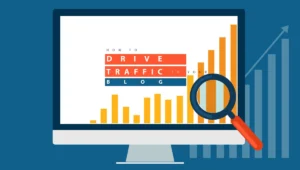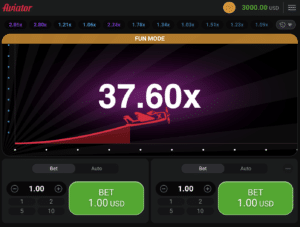How to Write a Blog Post That Ranks on Google

Introduction
today we discuss How to Write a Blog Post That Ranks on Google. It can be safely said that the process of crafting a blog post that will rank on the top of Google is actually the art of its planning. Another influential component in a successful blogging is writing content articles for blogging, an adequate utilization of keyword and the use of SEO strategies in the blogging. It is possible to increase the organic traffic from a blog by analyzing the ranking factors of Google and matching a blog or website to user intent.
Here is a step by step approach on how to write outstanding blog posts that are easy to read but are also SEO friendly as well. Let us discuss here how to turn your blog into an outstanding performer.
Understand what Google is seeking from a blog post.
Google targets articles which may give a provacative value, relevance and prop up a good experience of use. It seeks such content that provides answers to users’ queries, is easily accessible and optimised for mobile usage. Engaging headings, quality backlinks, and clear structure also play crucial roles.
Observing keyword density, using keyword in meta descriptions, and ensuring correct structuring of the blog enhance the rankings. By satisfying these expectations, one will have increased his or her chances of featuring in the first page of search results.
Keyword Research: The Foundation of SEO Success
Each blog post mustcontain certain keywords, which play pivotal role for that blog. In fact, they assist Google to analyse your content and relate it to the search strings you input. It is recommended to begin with the use of such tools as Google Keyword Planner or Ahrefs in order to specify keywords that might be relevant.
Concentrate on such keywords that have a very low competition for the given group but have a surprisingly large number of searches. Use the following naturally in your headings, content and meta description. It is critical to determine what viewers and internet users search on so that they reach your blog and your blog ranks high in the search engine results page.
Different technologies in the process of Blogging
Your blog title is the first thing, which user can see, so it should be eye-catching. Use the keywords in the title to ensure that it is search engine optimized and conveys the topic of the article. It is advisable to make it shorter than 60 characters to fit the search engine result pages.
Use the words such as ‘Save’, ‘Important’, ‘Buy Now’, ‘Sale’, ‘New’, ‘Limited time offer’, ‘Discount’, and others to increase the chances people will click on it. For instance, it can be applied in the creation of headlines such as ‘10 Top Strategies to Increase Blog Visitors’. This way, a strong title brings more clicks and – as far as Google is concerned – demonstrates that places wonderful content.
SEO purposes while ensuring it is easy for your readers to go through it?
The point is that properly structured blog post is more convenient to read for readers and for the search engine. Let it be noted that the use of proper heading tags (Heading 2, Heading 3) should be used to make it easy for the readers to locate information of interest.
Each paragraph should be concise and the important points should be expressed in a list. Longer post should be divided into sections for easier navigation, which will increase the usability of the site. Well-structured blogs make visitors to spend much of time on your site, fewer bouncing rates and higher likelihood of showing up on Google search page.
Developing Content that Will Address the Seeking of Users
Google punish content that are not inline with the user intent for searching particular items. Identify frequent questions people in your niche have and challenges they face, as well as give precise solutions. Make it colloquial and try simplifying the concept as much as possible to get your point across. Essentially there should be value addition in every line, avoid spiting any unnecessary information.
It is important to use statistics or figures, examples or quotes in your works, as it adds more credibility into your writing. High quality work creates credibility makes the readers remain interested thus increasing likelihood of being produced on the top result of the search engine.
On-page optimization
On-page SEO components are beneficial to the search engine in the sense that they make it possible for them to have a deeper understanding of the content of the site. Ensure that the description tag below the heading domain contains the keywords needed to describe your blog.
Those who wish to optimize their websites should use alt text in image files, as it will make the pictures more accessible, enhance site ranking, and increase search engine optimization. Make sure that the URL is clear and contains many keywords. Schema markup will help to optimize the look of your blog when it pops up in search engines. In doing so, this ensures that the generated blogpost both ranks well in the blog and appears good for the user.
The Role of Internal and External Links in SEO
Navigation or linking is a technique that assists the readers and Search Engines to sort out all the contents within your website. Relational links help in improving the duration of the session on your site because the user does not need to leave to another site for more information.
Other external sources provide the receptions that you have researched and make Google know that your site is legitimate. By making full use of descriptive anchor texts, it will be quite easy to make the two understand the content that is being linked to. On the other hand, agood linking system would improve the user experience as well as the search engine ranking.
Designing Graphic Images for User Interface and Search Engine Optimization
Visuals make your blog more interesting, captivating, and thus there will be a tendency of many people visiting your blog. Proofread the content and admit using high-quality images, infographics, or videos to make the texts more comprehensive and separate them with paragraphs.
Optimise images on the page to contain shorter size for faster loading time and add alt text for the purpose of search engine optimisation. Graphics also make the readers maintain interest and let Google know that they are going through interesting content. Having more images on a blog would ensure better or higher ratings when it comes to the basic SEO and rating such as CTR and KR.
Increasing Blog Traffic and Backlinks to Your Blog Post
Writing your blog is just one part of the process; the other is the promotion because the post will not attract readers on its own. Include your post in your social media profiles, news letters, blogs or message boards. Gather more backlinks and awareness by working with influencers or bloggers of your specific industry.
It means that in the process of implantation, professional use paid ads if necessary so as to cover a wider net. Other benefits of escalated traffic and backlinks inform Google of the site’s worth and consequently increases the possibilities of ranking. Therefore promotion can be said to play an important role in transformation of great blog to a viral one.
Analysing Your Blog Post After It Has Been Indexed on Google
It is advisable to make use of the analytics tools like Google analytics and Google Search Console to measure the performance of the blog. Those include traffic, bounce rate, average session and page views among others. Find out which keywords will bring the most visitors to the site and correlate your content to increase traffic.
Relate all the older posts to the recent posts to make them up to date in the issues the post will be writing on. Through constant monitoring and application of SEO, the blog effectively retains its position on the search engine result and continues to attract traffic.
Conclusion
Search engine optimization is a process where one produces quality content, optimizes them and then promote them. By doing the above steps, you will be able to get more readership, better ranking, and more valuable blog posts.
The users should always be at the center of most of the content, creating a well-structured content piece should also be a priority and lastly frequent optimization must be made based on performance data. Therefore, a blog that is appealing to the users and is also recognised by search engines is a blog that is vibrant. These tips can be put to use as soon as possible in order to enhance effectiveness in the future.







